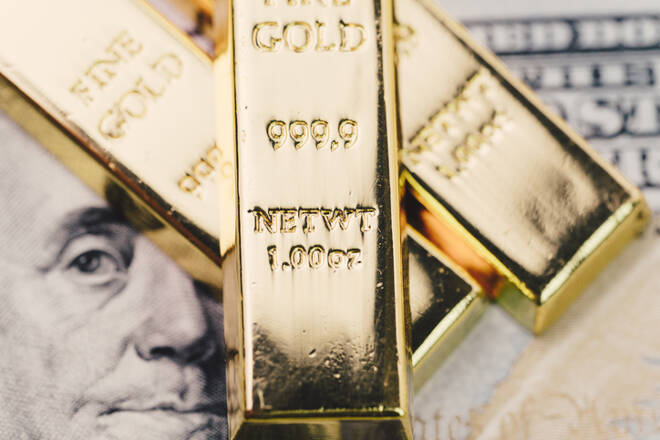Advertisement
Advertisement
Price of Gold Fundamental Weekly Forecast – Higher U.S. Real Rates Will Keep the Pressure on Prices
By:
Ongoing strength in domestic data should lead to an incrementally hawkish turn in Fed guidance over the coming months. This would be bearish.
Gold futures were pressured last week by rising Treasury yields and a steady U.S. Dollar. The catalyst behind the selling pressure driving gold lower was a series of better-than-expected U.S. economic reports. They were strong enough to offset the dovish rhetoric from the U.S. Federal Reserve and Fed Chair Jerome Powell.
Last week, June Comex gold settled at $1767.70, down $10.10 or -0.57%.
The Fed left policy unchanged as expected. Additionally, Fed Chairman Jerome Powell acknowledged the U.S. economy’s growth, but said there was not enough evidence of “substantial further progress” toward recovery to warrant a change to its ultra-loose monetary settings.
Despite the Fed’s dovish tone, U.S. Treasury yields inched higher on the back of stronger-than-expected U.S. economic data.
The U.S. Commerce Department said first-quarter gross domestic product rose 6.4%, versus the 6.5% expected by economists polled by Dow Jones. The Labor Department reported that 553,000 new jobless claims were filed last week, just above the 528,000 estimated by economists.
Data also showed a 4.2% rebound in U.S. consumer spending in March, amid a 21.1% surge in income as households received additional COVID-19 relief money from the government, supported the dollar. That led to a 0.4% rise in the core personal consumption expenditures (PCE) index, compared with a gain of 0.3% the previous month.
Weekly Outlook
A couple of factors point toward the possibility of heightened volatility over the near-term.
Although the Fed continues to say it will stay the course with its current loose monetary policy until the labor market returns to pre-pandemic levels and inflation exceeds expectations, the action in the Treasury market suggests investors believe central bankers will made a move sooner-rather-than-later.
“Gold still remains bid (short-term uptrend), it is just not a strong hand right now, because of the month-end rebalancing.” Benchmark U.S. 10-year Treasury yields hovered near their highest in more than two weeks, increasing the opportunity cost of holding non-yielding bullion. Earlier this week, the Fed held interest rates and its bond-buying program steady. “Ongoing strength in domestic data should lead to an incrementally hawkish turn in Fed guidance over the coming months,” UBS analysts said in a note.
Higher U.S. real rates will likely trigger further ETF outflows, UBS said, adding that they expect bullion to fall to $1,600 per ounce by year-end.
Goldman Sachs, on the other hand, said it expects to see gold prices at $2,000 an ounce over the next six months
Somebody has to be right and this could be the source of near-term heightened volatility.
A stronger-than-expected payrolls number on Friday should drive yields sharply higher on the thought that the Fed may have to start seriously considering tapering its bond purchases sooner than expected. This would be bearish for gold.
For a look at all of today’s economic events, check out our economic calendar.
About the Author
James Hyerczykauthor
James Hyerczyk is a U.S. based seasoned technical analyst and educator with over 40 years of experience in market analysis and trading, specializing in chart patterns and price movement. He is the author of two books on technical analysis and has a background in both futures and stock markets.
Did you find this article useful?
Latest news and analysis
Advertisement
